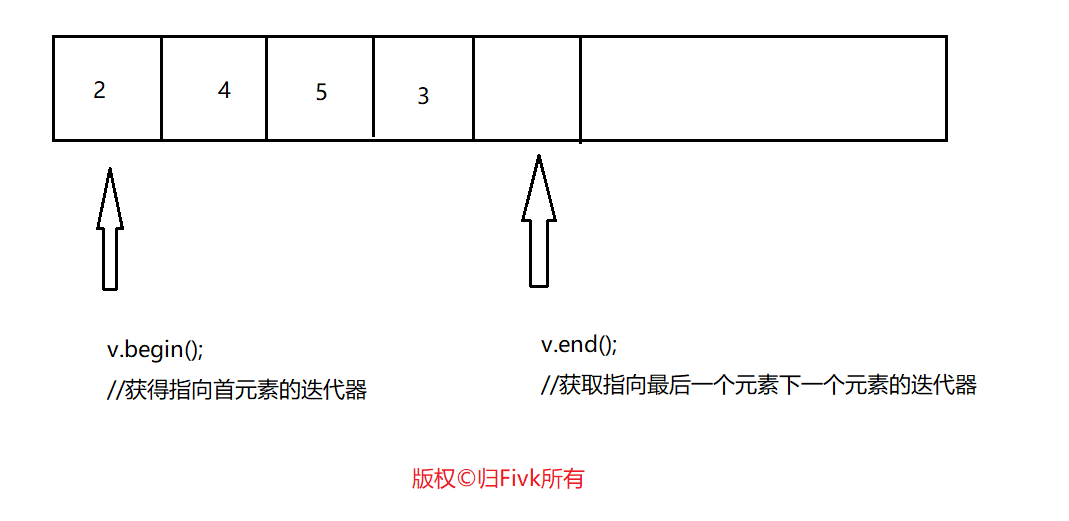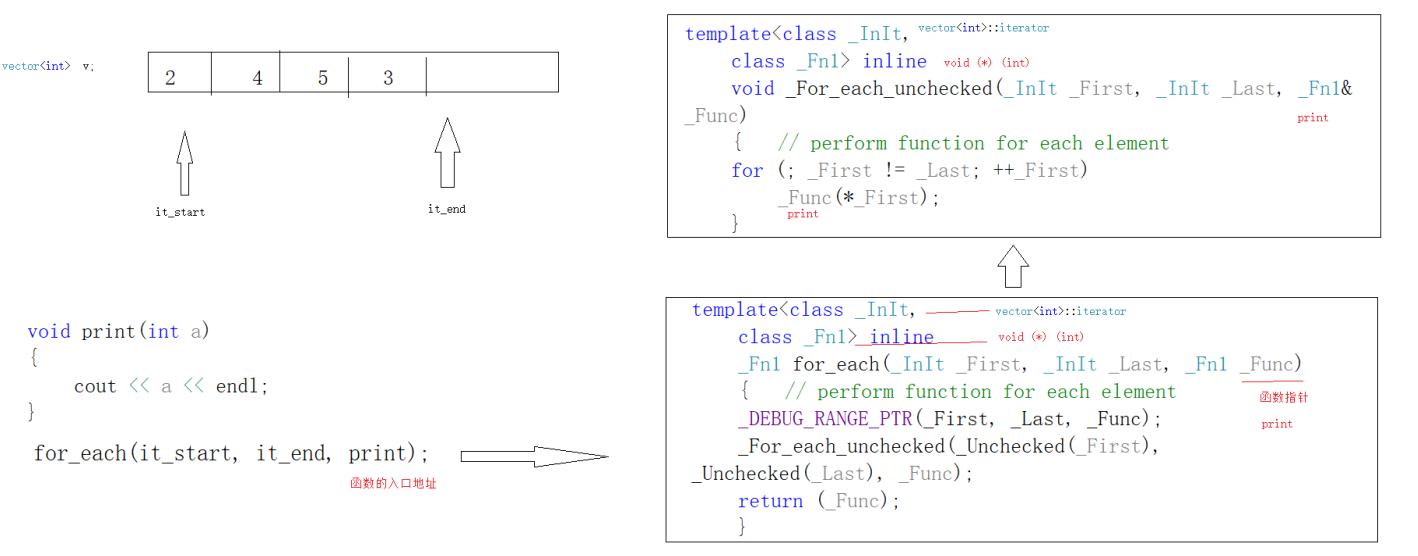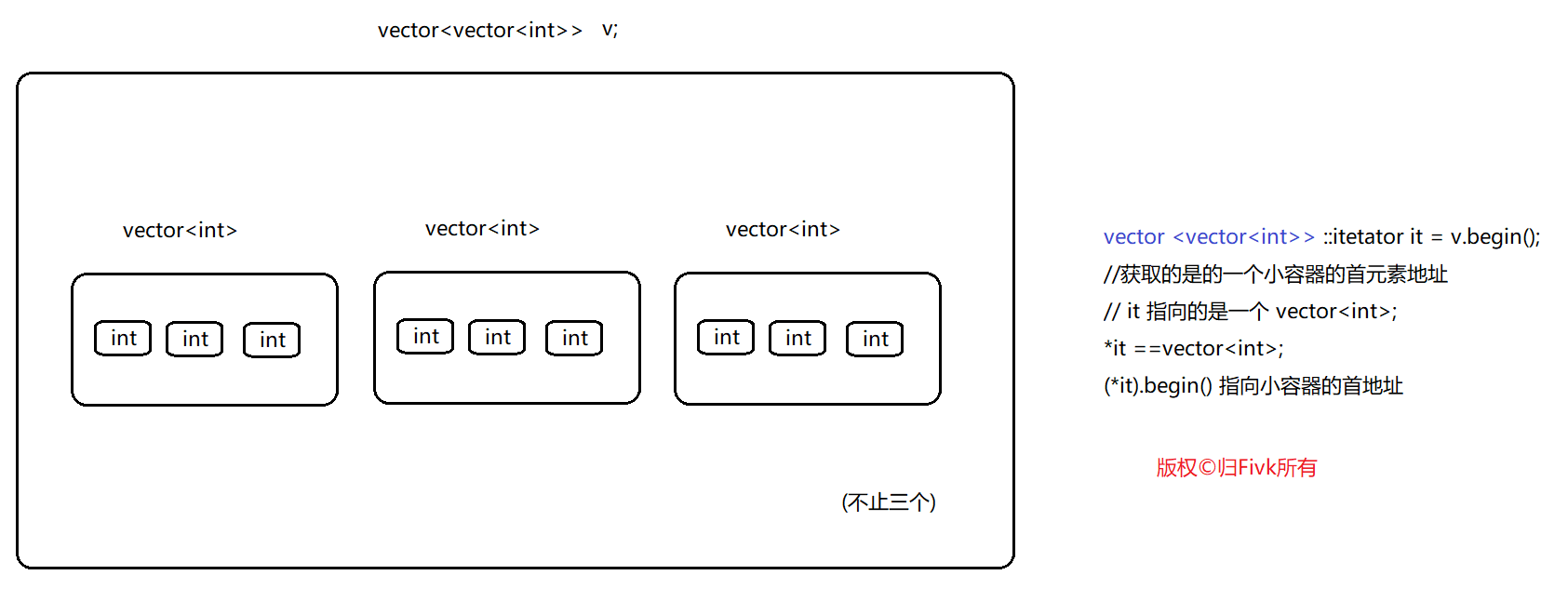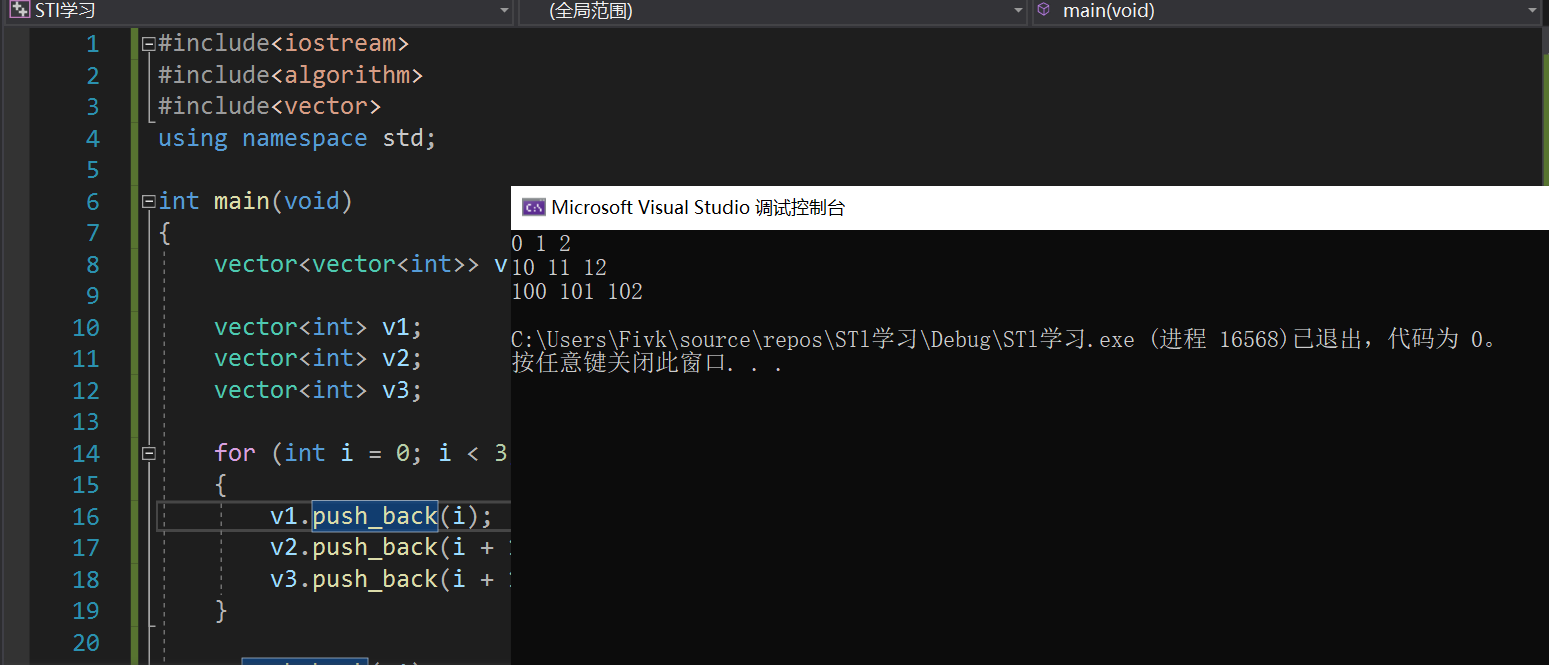Loading... ## 1.容器 **保存数据的(数据结构)** 常用的数据结构:数组(array),链表(list),tree(树),栈(stack),队列(queue),集合(set),映射表 (map),根据数据在容器中的排列特性,这些数据分为序列式容器和关联式容器两种。 序列式容器强调值的排序,序列式容器中的每个元素均有固定的位置,除非用删除或插入的 操作改变这个位置。Vector容器、Deque容器、List容器等。 关联式容器是非线性的树结构,更准确的说是二叉树结构。各元素之间没有严格的物理上 的顺序关系,也就是说元素在容器中并没有保存元素置入容器时的逻辑顺序。关联式容器另 一个显著特点是:在值中选择一个值作为关键字key,这个关键字对值起到索引的作用,方 便查找。Set/multiset容器 Map/mul┶map容器 ## 2.算法 算法,问题之解法也。以有限的步骤,解决逻辑或数学上的问题,这一门学科我们叫做算法(Algorithms)等广义而言,我们所编写的每个程序都是一个算法,其中的每个函数也都是一个算法,毕竟它们都是用来解决或大或小的逻辑问题或数学问题。STL收录的算法经过了数学上的效能分析与证明,是极具复用价值的,包括常用的排序,查找等等。特定的算法往往搭配特定的数据结构,算法与数据结构相辅相成。算法分为:<span style="color:#9932CC">质变算法</span>和<span style="color:#9932CC">非质变算法</span>。 * 质变算法:是指运算过程中会更改区间内的元素的内容。例如拷贝,替换,删除等等 * 非质变算法:是指运算过程中不会更改区间内的元素内容,例如查找、计数、遍历、寻找极值等算法需要包含的头文件: algorit ## 3.迭代器 迭代器(iterator)是一种抽象的设计概念,实现程序语言中并没有直接对应于这个概念的实物。iterator模式定义如下:提供一种方法,使之能够依序寻访某个容器所含的各个元素,而又无需暴露该容器的内部表示方法。 迭代器的设计思维-STL的关键谁在,STL的中心思想在于将容器(container)和算法(algorithms)分开,彼此独立设计,最后在粘胶着剂将他撮合在一起。从技术角度来看,容器的算法和算法的泛型化并不困难,C++的class template 和 function template 可分别达到目标,如果设计出这两个之间的良好胶着剂,才是难题。 * 迭代器的种类: | 迭代器种类 | 功能 | 特点 | | :-: | :-: | :-: | | 输入迭代器 | 提供对数据的只读访问 | 只读,支持++、==、!= | | 输出迭代器 | 提供对数据的只写访问 | 只写,支持++ | | 向前迭代器 | 提供读写操作,并能向前推进迭代器 | 读写,支持++、==、!= | | 双向迭代器 | 提供读写操作,并能向前和后操作 | 读写,支持++、-- | | 随机访问迭代器 | 提供读写操作,并能以跳跃的方式访问容器任意数据是功能最强迭代器 | 读写,支持++、--、[n]、-n、<、<=、>、=> | ## 案例1:使用迭代器遍历每个元素    ```C++ #include<iostream> #include<vector> #include<algorithm> using namespace std; void print(int a) { cout << a << " "; } int main(void) { vector<int> v; v.push_back(2); v.push_back(4); v.push_back(5); v.push_back(3); //若需要访问容器内的元素,需要拿到容器首元素的迭代器(指针) vector<int>::iterator it_start = v.begin(); vector<int>::iterator it_end = v.end(); /*while (it_start != it_end) { cout << *it_start << " "; it_start++; }*/ for_each(it_start, it_end, print); cout << endl; return 0; } ``` ## 案例2:迭代器指向的元素是自定义数据 ```C++ #include<iostream> #include<vector> #include<algorithm> using namespace std; class Person { public: Person(int age) { this->age = age; } int age; }; void print_Person(Person & p) { cout << p.age << " "; } int main(void) { Person p1(1); Person p2(2); Person p3(3); Person p4(4); //括号里面的东西是初始化 vector<Person> v; v.push_back(p1); v.push_back(p2); v.push_back(p3); v.push_back(p4); vector<Person>::iterator it_start = v.begin(); vector<Person>::iterator it_end = v.end(); for (; it_start != it_end;it_start++) { print_Person(*it_start); //注意 it_start 原本就是指针,是指向 <> 容器里面的类型,在这里是指向Person类型 } cout << endl; //当然还可以通过for_each()函数输出 it_start = v.begin(); //指针位置归为 for_each(it_start, it_end, print_Person); return 0; } ``` ## 案例3:迭代器指向的是一个容器  ```C++ #include<iostream> #include<algorithm> #include<vector> using namespace std; int main(void) { vector<vector<int>> v; vector<int> v1; vector<int> v2; vector<int> v3; for (int i = 0; i < 3; i++) { v1.push_back(i); v2.push_back(i + 10); v3.push_back(i + 100); } v.push_back(v1); v.push_back(v2); v.push_back(v3); vector<vector<int>>::iterator it1 = v.begin(); for (; it1 != v.end(); it1++) { vector<int>::iterator it2 = (*it1).begin(); for (; it2 != (*it1).end(); it2++) { cout << *it2 << " "; } cout << endl; } return 0; } ```  最后修改:2021 年 04 月 12 日 © 禁止转载 打赏 赞赏作者 支付宝微信 赞 如果觉得我的文章对你有用,请随意赞赏